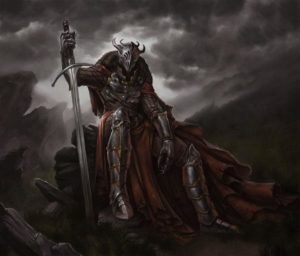
Video games have become such an integral part of the global popular culture that it is almost impossible to imagine a time when they did not exist. This is ironic because, before anything else, video games summon the power of our imagination. Then again, the fascinating, ever-expanding universe of video games is no stranger to irony.
These games have been around for many decades; to be more precise, since 1947, when Thomas T. Goldsmith Jr. and Estle Ray Mann filed for and obtained a patent on a “Cathode ray tube Amusement Device”. However, it can easily be argued that the history of video games goes much beyond the machine-learning twentieth century. The first time a human being invented what will now be called an “indoor” game, the seeds of video games were sown. Indoor games create a make-belief world and invite us to inhabit it. Video games follow this tradition. Chess is a classic example of a board game which has made a smooth transition into the world of console and computer games.
Having said that, the story of video gaming proper began only in the 1980s when they started to make their way to the centre of the pop cultural landscape. Since then, the number and range of these games have expanded at an astonishing pace, matched only by the voracious demand for them. Today, the market is filled with astronomical quantities and qualities of video games, from the simplest and most popular arcade games, classics that have never gone out of fashion, to the latest marvels of the marriage between technology and human imagination.
These games have had their share of controversies. The first set of controversies is regarding their very nature and existence. Naysayers have argued that video games are addictive and harmful to the child and adult alike. It is said that their trigger-happy and gory nature promotes violence by making it banal. But there have also been studies demonstrating that video games improve hand-eye coordination, enhance memory, sharpen attention and concentration, boost problem-solving and promote multi-tasking. Some even claim that video games improve social skills and are a superb source of learning.
Then there has been a raging debate about whether video games are an art form or not. Many are quick to reject video games as a quirk of popular culture, lacking the depth and profundity of art. Yet, when one looks at games like Journey, Metal Gear Solid V: The Phantom Pain, Bioshock, or even good old Tetris, with their unique and mesmerizing aesthetics, simplicity of idea but complexity of the result, brilliant storytelling and mechanics, it is difficult to dismiss their claims to being an art form.
*****
With this in mind, let us move to our list of the best video games of all time. To compile such a list is easier said than done. There are an infinite number of ways we can judge the merits and demerits of a video game. We can, for example, consider the popularity of a game. We can also look at the aesthetics of a game, its use of visuals and sounds. We can take game play, mechanics and story into consideration. We can only judge games on the basis of revolutionary ideas they brought forth and the influence they have had on the development of games after them.
Our list uses an eclectic mix of criteria. Like with any such list, it is influenced to a degree by our personal bias.
Tetris

The good old tile-matching puzzle video game originally designed and programmed by Soviet Russian designer Alexey Leonidovich Pajitnov. Players have to complete layers of bricks which keep sliding down from the beyond in a series of different shapes. Every completed layer disappears, but incomplete layers keep piling on and if they touch the upper limit, the game is finished. Conceptually simple (only matched by a game like Snake), and with an uncomplicated game play, Tetris has enjoyed durable popularity over the decades and has fawned an entire industry of copycats and inspired many more. One of the many variants of the game is available for nearly every video game console and computer operating system, as well as on devices such as graphing calculators, mobile phones, portable media players, network music players, etc. It has even been played on the sides of various buildings! Tetris has been big business, single-handedly responsible for the popularity of Game Boy, selling more copies of the device than could be imagined and placing a firm foundation under the fledgling portable gaming industry. Along with Minecraft, it is also the most paid-downloaded game ever.
Super Mario World

Super Mario series, created by Nintendo and featuring their mascot, Mario, is without doubt one of the most iconic and successful gaming series of all time. Together, the platform games of this series have sold more copies than any other video game in history. But to single out one game of the series and make it part of an all-time greats list at the prejudice of the rest is an unimaginably tough task. Does one select Super Mario Bros, the game that started it all, or does one select Super Mario 64, the first 3D and open world game in the series? Should one not choose Super Mario Bros 2, which introduced the genius idea that a gaming series could ride on the back of an easily recognizable mascot, even as it evolved in terms of technology, game play and mechanics over time?

Well, we have selected the 1990 game Super Mario World, simply because we are too tired to think on this anymore. The game cranked up to the next level everything Nintendo had built with the first three games on the NES. Everything was bigger, brighter, and more complex. The game has 72 levels, most with a single exit, but some with hidden second exits. The objective of the game is to make Mario rescue Princess Toadstool and the Dinosaur Land from Bowser and his children, the Koopalings. The game also introduced Yoshi, a dinosaur who can eat enemies and gain abilities.
Journey
Released in 2012 and developed by indie Thatgamecompany, Journey has rightly been described as the one game that has come closest to emulating the effects of poetry. A player controls a robed figure whose journey begins in a desert and whose objective is to reach a snowy peak visible over the horizon. Along the way, your character surfs across glistening deserts, hides from flying creatures made entirely from cloth and can meet and assist characters controlled by other players on the same journey, but auditory or textual communication among players is barred and they cannot see each other’s names until after the game’s credits. The only form of communication between players is a musical chime which transforms dull pieces of cloth into a vibrant red, affecting game play and helping the players move through the levels more smoothly. The robes keeps getting bigger or smaller, which also affects the movement and agility of the character.

The music for Journey has been composed by Austin Wintory and is perhaps the single greatest musical theme written for a video game ever, creating an immersive experience like no other. The game design ensures that music dynamically responds to a player’s actions, building a single theme to represent the game’s emotional arc throughout the story. The developers stated aim was to evoke in the player a sense of smallness and wonder, and to forge an emotional connection between them and the anonymous players they meet along the way. They succeed.
Grand Theft Auto V

The world of Grand Theft Auto has evolved massively over the years. The open worlds have become bigger and more detailed. The game play has become smoother and more complicated. Grand Theft Auto 3 is an excellent candidate for this list, but it is Grand Theft Auto V which makes the final cut for its obsessive attention to detail and for how real the open world feels. Almost no block of pixilated turf is repeated, and everything, from the worn-out asphalt to the trees growing on the banks of the streams, has been carefully crafted and honed. The Red Dead Redemption series might also be a worthy rival (although both come from the same developer, Rockstar Games), but we choose GTA V for its more flexible game play that allows the player to inhabit and switch between three different characters—Franklin Clinton, a young Black guy wanting to make it big, Michael De Santa, a reformed ex-con, and Trevor Philips, Michael’s short-fused ex-partner—sometimes in a matter of seconds. As player’s complete missions, the interconnected stories of the three characters unravel. The multi-player online version of the game allows up to thirty players to engage in cooperative or competitive gaming modes. More than 90 million copies sold is the final stamp of quality and popularity of this game. Enough said!
The Legend of Zelda:Breath of the Wild

Nintendo hit the bull’s eye with The Legend of Zelda series. This action-adventure game series is as much about Link, the playable character, fighting the antagonists, the most recurring and important one being Ganon (also known as Ganondorf in his humanoid form), and saving Hyrule, as it is about solving complex puzzles using the mind to exploit the game’s mechanics. The Zelda series was one of the first to create a truly open world which encouraged players to explore its various facets according to their own whims rather than moving in a linear trajectory from a point of origin to a point of destination. Like with the Mario series, any number of Zelda games could be considered for this list, most notably the 1998 release The Legend of Zelda: Ocarina of Time, that masterfully (and slowly) introduced systems to become ever more complex and intriguing and set industry standards for a game story design, or the 1991 release The Legend of Zelda: A Link to the Past, which filled out the world of Hyrule with interaction-allowing details and took game immersion to the next level.
But we have considered the latest iteration of the series, the 2017 release The Legend of Zelda: Breath of the Wild for our list simply because it proves that a great idea does not fade away with technological advancements, it responds and mutates, to create new levels of magic and bliss.
The Elder Scrolls V: Skyrim
If there was only one reason to choose Skyrim for this list, it would be the massive size of its open world. Do you need another reason? Well, how about the army of memes the game spawned, proof of its influence on pop culture. Ever heard the meme-phrase “take an arrow to the knee”? It comes from Skyrim and it is a funny story, but to know the story, you have to play the game.

The open world of Skyrim, an action role-playing video game developed by Bethesda Game Studios and released in 2011 is so massive that it forced even many hardcore gamers to abandon their deep desire to complete everything within a game and explore everything it has to offer. It simply was too much. The main objective of the game (which a player can postpone indefinitely) is to make the player’s character defeat Alduin the World-Eater, a dragon who is prophesized to destroy the world. But roaming around in such a huge open world with a new distraction waiting around every corner, from non-playable characters (NPCs) who one can talk to, fight or even marry, to NPC factions one can join, to killing dragons, exploring dungeons and completing the many, many side-quests, it is very easy to forget the main quest and get lost like one does in the real world, a la Tristram Shandy. An unforgettable immersive experience.
Half-life
Half-life perfected the art of storytelling in a video game. When this game, developed by Valve Corporation first came out in 1998, it immediately grabbed eyeballs for its revolutionary integration of game play and story. It discarded cutscenes and level-ups, a staple of games till then, in favour of a continuous game play that never took control away from the player, instead goading the player to move the narrative forward by using a very Stephen Kingsque storytelling technique. This allows the game to feel “level-free”—chapters (whose name flashes across the screen when they begin) replace levels. You assume the role of Gordon Freeman, a scientist who must find his way out of the Black Mesa research facility after an experiment goes horribly wrong. The playable character never speaks and since it is a first person shooter and puzzle-solving game, a player feels they are Gordon Freeman.

The game won over 50 PC Game of the Year Awards and had sold 9 million copies by 2008. It will always be remembered for revolutionizing the way video games were structured and told, introducing a unique technique of narration that did not ape films of novels.
Civilization IV
If you have never heard of Civilization IV, begin your acquaintance with this turn-based strategy game through its iconic, Grammy-nominated theme song, Baba Yetu. It is a song for the ages, quite literally in the context of the game, and will etch itself in your mind. The first version of the game, created by Sid Meier and Bruce Shelley for MicroProse in 1991, might feel a tad bit too dated, but the 2004 Civilization IV still packs a punch and can suck you in almost two decades later. Take a moment to marvel at that fact. Civilization has set the benchmark for strategy games, inspiring game like the Age of Empire series and seeping influence into the Total War series.

Players take control of one of the major historical civilizations of the world and proceed from simple beginning to build a strong and powerful empire through the ages, from ancient times to the near-future, developing new cities, buildings, units, technologies, and social, political and economic systems along the way. The game strikes a perfect balance between micro- and macro-management. It also allows players the freedom to choose from among a variety of playing styles: Trade, warfare, diplomacy, exploration, etc. Perhaps even more interesting for a Kosher audience will be an integer underflow bug in the original Civilization game. Each civilization is led by a leader with a particular set of traits. India is led by Gandhi, who the game designates as peace-loving (by giving him an aggression level of one out of a possible 255). When a civilization adopts democracy, its aggression level falls by two. When India adopts democracy, its aggression level falls to -1, which the game reads as 255. India led by Gandhi becomes a hyper-nationalist nuclear warmonger as soon as it adopts democracy!
Metal Gear Solid V: The Phantom Pain
Hideo Kojima is a certified genius and one of the great artists of our time. The Metal Gear series is his masterpiece. Every installment of the game is a philosophical and graphic tome in itself, together the series is an important artifact of contemporary art. At the surface level, the series is a stealth action-game about Solid Snake (or Big Boss), the main protagonist in most of the titles, his brother and an important antagonist Liquid Snake, Metal Gear (bi-pedal tanks with the ability to fire nuclear weapons) and various other antagonists. But closer examination reveals Kojima’s conceit of hand, as every game turns out to be a profound meditation on one of the important contemporary political or philosophical issues. Way back in 2001, Metal Gear Solid 2: Sons of Liberty took a deep plunge into subjects like the crisis of the information age, memetics, artificial intelligence, and the politics of a post-truth society. Metal Gear Solid 3: Snake Eater hides one of the greatest love stories of video gaming behind its barebones structure and edgy, poetic mechanics.

Metal Gear Solid V: The Phantom Pain, our selection for this list, presents an unparalleled examination of the nature of the pain of losing a language, which is also the loss of a world. Who can forget Skull Face’s immortal lines, “I was born in a small village. I was still a child when we were raided by soldiers. Foreign soldiers. Torn from my elders, I was made to speak their language. With each new post, my masters changed, along with the words they made me speak. Words are… peculiar. With each change, I changed too. My thoughts, personality, how I saw right and wrong… War changed me—and not only my visage. Words can kill. I was invaded by words, burrowing and breeding inside me. A philosopher once said, ‘It is no nation we inhabit, but a language. Make no mistake, our native tongue is our true fatherland.’ My fatherland—my truth was stolen from me. And so was my past. All that’s left is the future. And mine is revenge.”
The series also popularized non-lethal game play as stealth and non-lethality are richly rewarded within the game. Rejoice, non-violence!
Portal

Is Portal the greatest puzzle-platform video game ever made? The answer cannot be a flat no. Teleporting the player’s character and simple objects using Aperture Science Handheld Portal Device (or, in short, portal gun) to solve puzzles sounds simple enough, but the game’s elegant design and mechanics almost elevates it to the level of spirituality. Retention of kinetic energy across portals presents a unique challenge and opportunity to players, as the energy needs to be utilized intelligently and carefully. Portal also employs a keen and unique sense of humour, giving the game an even more distinct flavour. Most puzzles can be solved by more than one method and the game play gets crazier and more mentally stimulating with each completed level. By the time you reach the humourous end credits song Still Alive, you have almost become one with Chell, the first-person playable character. The interactions between Chell and the taunting artificial intelligence GLaDOS (Genetic Lifeform and Disk Operating System), who tries to dissuade and mislead Chell at every stage, are beautifully done; the tension of taking the story forward on the basis of information passed from an unreliable antagonist to the protagonist dealt with masterful finesse. Released in 2007 and developed by Valve Corporation, Portal is a triumphant exhibition of humankinds puzzle-solving desire and skills.
Doom

Just one word: DeathMatch. Doom invented it. Developed by id Software for MS-DOS, Doom marked a watershed in first-person shooter (FPS) games. Everything before it was low-res, slide-screen slowness we had to bear. Everything after it had to be as good as Doom to even matter. Its smooth first-person game play, fantastic music and visceral presentation were a big leap into the future. Players assume the role of an unnamed space marine, christened by gamers as Doomguy, and fight their way through hordes of invading demons from Hell. Nine levels of the game (about one-third of the entire game) were freely distributed as shareware. As a result, the game was played by an estimated 20 million people within two years of its release. The global impact of this strategy cannot be overestimated. The game popularized the business model of online distribution and FPS genre in game play. It pioneered technologies of immersive 3D graphics and downloadable content (DLC). It ushered in the era of networked multiplayer gaming, as people hauled their bulky PCs to one other’s homes to connect them through a LAN for a DeathMatch. A truly immense cultural phenomenon that changed the world.
Doom was also the fall guy for all the evils of video gaming for many years, as it was heavily criticized for its mindless and mind-numbing violence.
Kashmir in video games

Bioshock
“Would You Kindly” consider this, Bioshock could easily make to our list of all-time best games, but for the fact that it is one of the few games that mentions Kashmir. Hence, it finds itself boxed here.
Released in 2008, this first-person shooter game developed by 2K Boston (later Irrational Games) and 2K Australia, set in the dystopian world of Rapture, an underwater city that was meant to be the future of the human race, has one of the most unique and memorable game aesthetics and design. Set in 1960, the player guides the main protagonist Jack after his plane crashes near the bathysphere that leads to Rapture. He descends into the city populated by dangerous enemies like Splicers and Big Daddies and with only a few good human beings left. He has to find a way out of this quagmire, being constantly guided by the voice of business magnate and Rapture creator Andrew Ryan, until a final twist unravels the whole plot. The game has been praised for its dreamlike aesthetics, its moral game play and unique settings.
But our interest here lies in the beginning of the game, where a message is relayed:
“This is an emergency message from Ryan Industries, there has been an incident at the Kashmir Restaurant…” ―

The Emergency Announcement signifies the start of the Civil War. Run by a woman named Brenda, the Kashmir Restaurant was a famous high class establishment located at the Welcome Center, where the rich and famous could go to enjoy fine dining in a relaxing environment. It also served as a location to showcase Rapture’s extraordinary atmosphere to new arrivals to the city. It was the first of the target locations of murderous attacks led by Atlas to take control of Rapture on New Year’s Eve of 1958.
Hitman 2
Hitman 2 is a stealth video game developed by IO interactive and published by Warner Bros. It is the seventh installment in the Hitman series and was released in 2018. You play as Agent 47, and embark on a mission to hunt the mysterious Shadow Client and disassemble his militia.

During the mission Chasing a Ghost, set in Mumbai, India, Agent 47 has to eliminate Vanya Shah, Dawood Rangan and the Maelstrom. However, if the player makes certain choices, another mysterious hitman known only as the Kashmirian eliminates both Shah and Rangan before Agent 47 can.
Burhan vs Modi
In this game, released just after Burhan Wani’s death primarily for Android platforms, the Hizbul Mujahideen commander is alive and kicking ass, quite literally. He fires an AK-47 at Narendra Modi, India’s Prime Minsiter, and sometimes gives him the feet treatment in the six levels of this game.

The administration in Kashmir was not amused by this game and it was promptly banned and a manhunt initiated against the developers.
*****
All in all, video games have become an important and integral part of modern life, so we can only ignore them at our own peril. Like with everything else in life, there is good and bad in video games too, and there are great video games which open our mind to new possibilities and novel ways of looking at the world. At present, most video games are primarily produced for markets in the West, so the themes and stories are dominated by Western cultures. As the production and consumption of video games becomes decentralized, we will witness a more diverse thematic and conceptual arena. This will be vital, because video games are only going to become an even more important cultural phenomenon in the future, and we do not want to be left out of this field, particularly the production of video games, which can not only create wealth but also generate tremendous soft power. We need to embrace the culture of video games, armed with the golden saying, “Excess of everything is bad”.
Do you agree with our list? Did we miss a favourite? Do you know of any other references to Kashmir in video games? Write to us at zaanvunlokchaar@gmail.com

